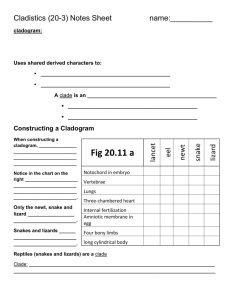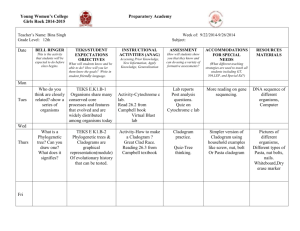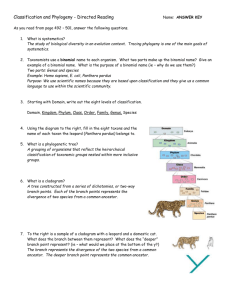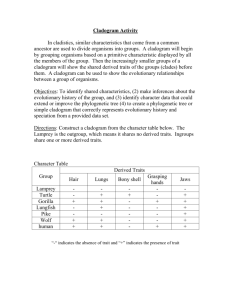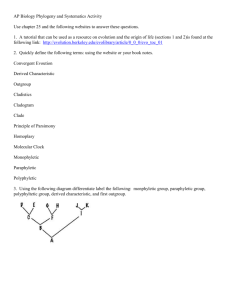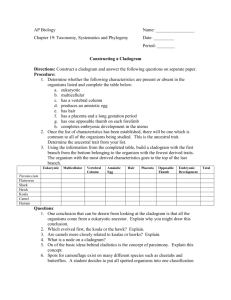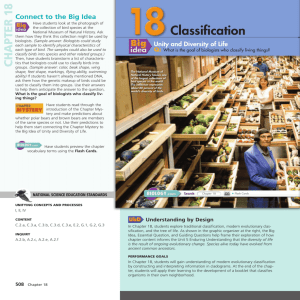T. Rex Cladistics Worksheet: Evolutionary Relationships
advertisement
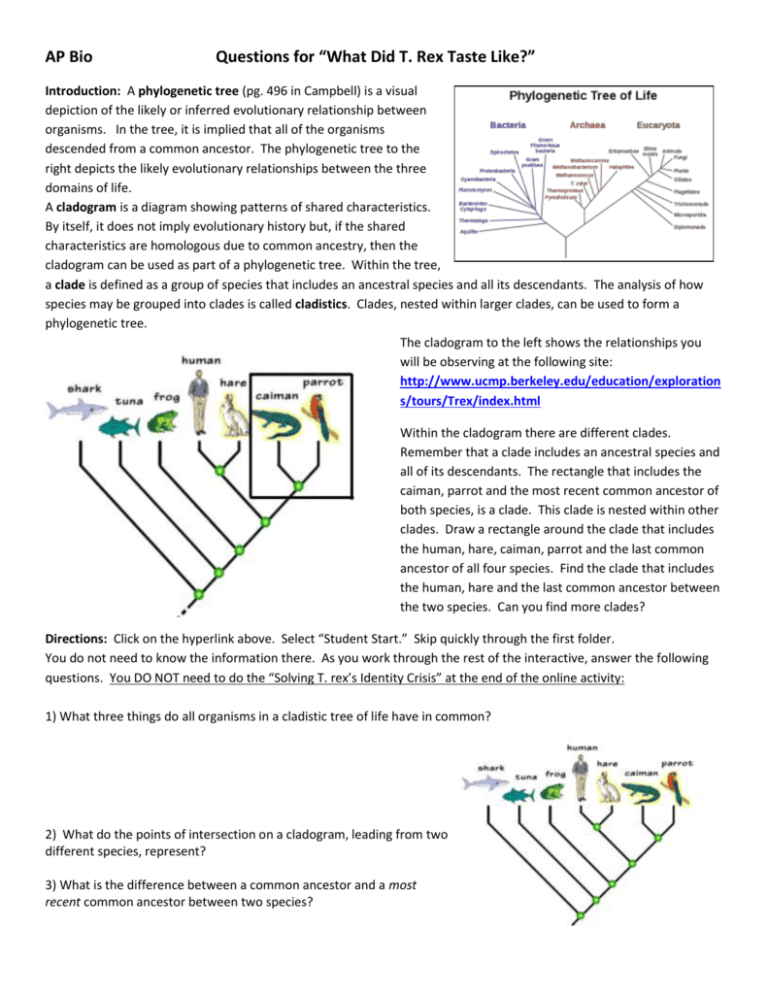
AP Bio Questions for “What Did T. Rex Taste Like?” Introduction: A phylogenetic tree (pg. 496 in Campbell) is a visual depiction of the likely or inferred evolutionary relationship between organisms. In the tree, it is implied that all of the organisms descended from a common ancestor. The phylogenetic tree to the right depicts the likely evolutionary relationships between the three domains of life. A cladogram is a diagram showing patterns of shared characteristics. By itself, it does not imply evolutionary history but, if the shared characteristics are homologous due to common ancestry, then the cladogram can be used as part of a phylogenetic tree. Within the tree, a clade is defined as a group of species that includes an ancestral species and all its descendants. The analysis of how species may be grouped into clades is called cladistics. Clades, nested within larger clades, can be used to form a phylogenetic tree. The cladogram to the left shows the relationships you will be observing at the following site: http://www.ucmp.berkeley.edu/education/exploration s/tours/Trex/index.html Within the cladogram there are different clades. Remember that a clade includes an ancestral species and all of its descendants. The rectangle that includes the caiman, parrot and the most recent common ancestor of both species, is a clade. This clade is nested within other clades. Draw a rectangle around the clade that includes the human, hare, caiman, parrot and the last common ancestor of all four species. Find the clade that includes the human, hare and the last common ancestor between the two species. Can you find more clades? Directions: Click on the hyperlink above. Select “Student Start.” Skip quickly through the first folder. You do not need to know the information there. As you work through the rest of the interactive, answer the following questions. You DO NOT need to do the “Solving T. rex’s Identity Crisis” at the end of the online activity: 1) What three things do all organisms in a cladistic tree of life have in common? 2) What do the points of intersection on a cladogram, leading from two different species, represent? 3) What is the difference between a common ancestor and a most recent common ancestor between two species? 4) Use the cladogram below or on the previous page to describe the unique or distinct history between the human and hare. What point on the cladogram represents their most recent common ancestor? Describe the shared history between the two organisms. 5) According to the cladogram below, why are parrots and caimans more closely related to each other than they are to hares? _________ 6) Which of the following is true? (choose all that apply) a. Cladograms represent the actual evolutionary relationships between different species of organism. b. Cladograms represent inferences about the evolutionary relationships between organisms. c. Cladograms can be built from data like fossils, embryology, genetic information and comparative anatomy. 7) Draw a bar on the cladogram to the right representing the following feature: lungs during some stage of development Where is the bar drawn and what organisms have this feature? 8) Given the cladogram to the right. Explain what the plus, and zero signs below the A and D species designations mean. 9) What designation did T. rex have for an amniotic egg? _______ Explain why? Could you infer that T. rex had an amniotic egg? 10) What is the overall purpose of a cladogram? In other words, what are they used for?

